Common name: blue tit
Scientific name: Cyanistes caeruleus
Family: Paridae (tits)
Habitat: woodland, gardens, hedges, parks
Diet: insects, spiders, caterpillars, fruit, seeds
Predators: sparrowhawks, weasels, owls
Origin: native
The blue tit might be famed for its bright, bold plumage, but it’s much more than just a pretty face. Spot it performing acrobatic displays while on the hunt for juicy caterpillars.
Common name: blue tit
Scientific name: Cyanistes caeruleus
Family: Paridae (tits)
Habitat: woodland, gardens, hedges, parks
Diet: insects, spiders, caterpillars, fruit, seeds
Predators: sparrowhawks, weasels, owls
Origin: native
The blue tit is a delicate little bird, weighing in at around 11g – half the size of a robin. Often considered our most attractive garden bird, the blue tit is extremely colourful, with a bright blue cap, white face, black stripes across the eyes, bright yellow breast and blue, green and white wings.
Not to be confused with: the great tit, which is much larger in size and has an all-black cap.
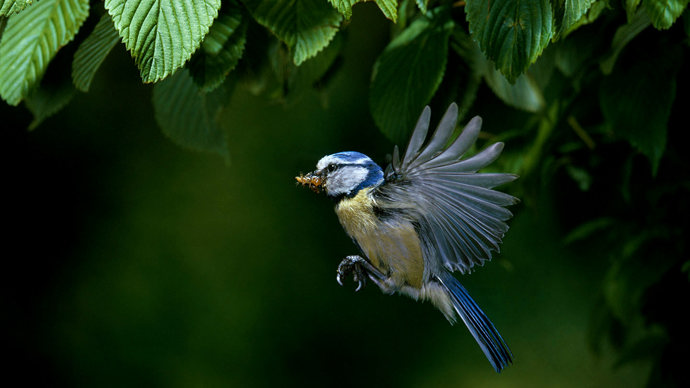
Credit: Stephen Dalton / naturepl.com
Caterpillars are a favourite for blue tits, but they also eat other insects, spiders, fruit and seeds. They are regular visitors to garden bird feeders, feasting on mixed bird seed, whole shelled peanuts, fat balls and sunflower hearts. Extremely acrobatic, they will often hang upside down from branches to access food. During the winter, blue tits join up with other tit species in search of food.
Like all birds, blue tits can see ultra-violet light – the front of their head glows brightly under UV light, and this is how females are thought to choose their partners.
Blue tits start looking for a place to nest as early as January, usually beginning to build their nest by late March. They favour cosy cavities: rot holes and cracks in trees, old woodpecker nests, crevices in walls and nest boxes.
Once a nest site is located, blue tits will begin building a nest out of moss, hair, leaves, feathers and spider webs. Unlike many other birds, blue tits will usually only raise a single brood each spring. They lay around 7–14 eggs, and won’t begin incubating until all of the eggs have been laid.
The clutch is usually laid from late April to early May, and incubation takes round 15 days. The male will bring the female food during this period. Once hatched, the chicks spend approximately three weeks in the nest before fledging.
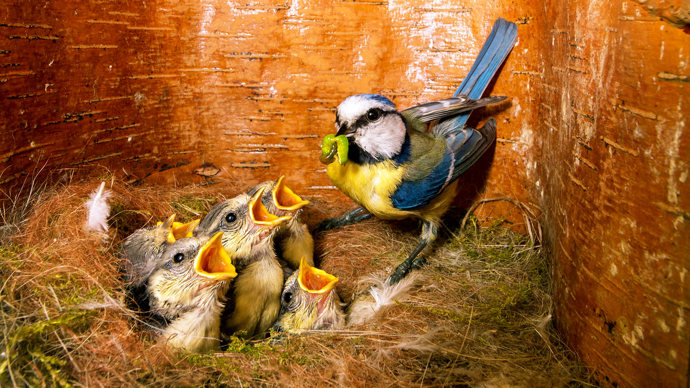
Credit: Konrad Wothe / naturepl.com
Blue tits are found in deciduous and mixed woodland, hedges, gardens and parks across the UK. They are one of our most common birds, with an estimated population of around 3.4 million pairs.
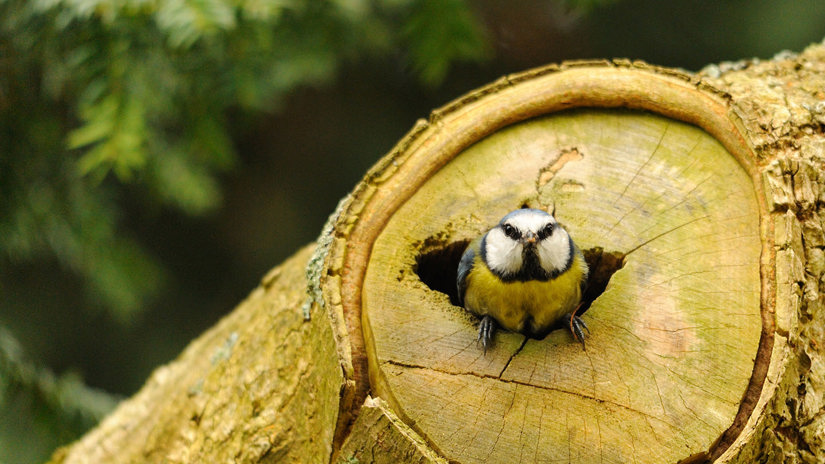
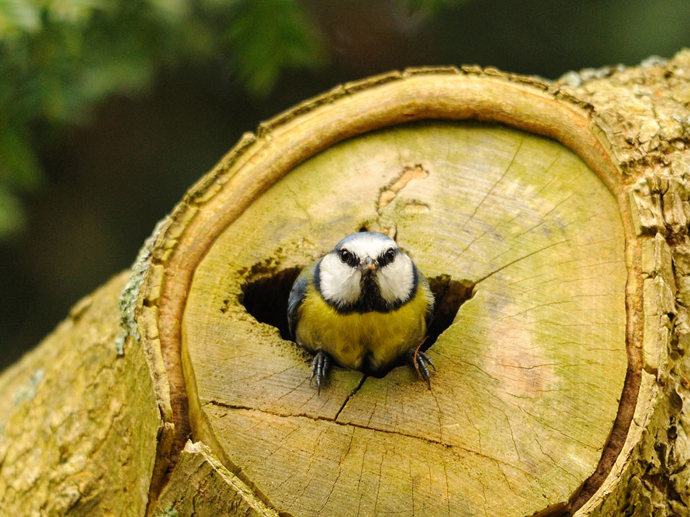
Amy Lewis • 12 Feb 2019
A sure sign of the start of spring is the sight of blue tits zipping back and forth to nest boxes, beaks full of moss. Find out when, where and how long blue tits nest, when their chicks fledge, and how important it is that they time things just right.
No other British tit has blue feathers.
The blue tit’s colourful feathers make this bird easy to spot. Look out for it perched on trees in woodland or foraging for a bite to eat on garden bird feeders, and listen for its high-pitched ‘tsee-tsee-tsee-chu-chu-chu’ song.
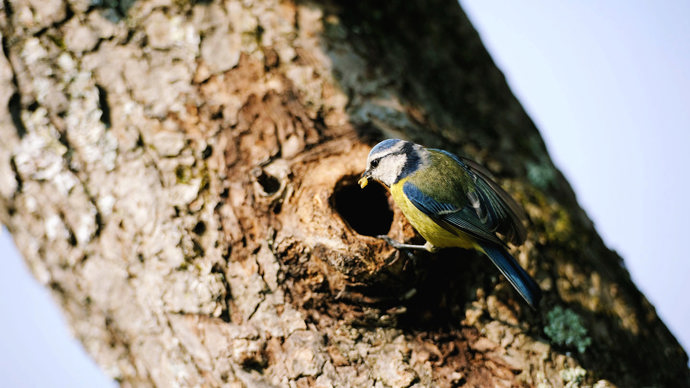
Credit: David Page / Alamy Stock Photo
The blue tit is a common, widespread species. Its population has grown by 21% since 1970. You can lend these birds a helping hand by placing bird feeders in your garden, particularly during the winter when food is scarce.
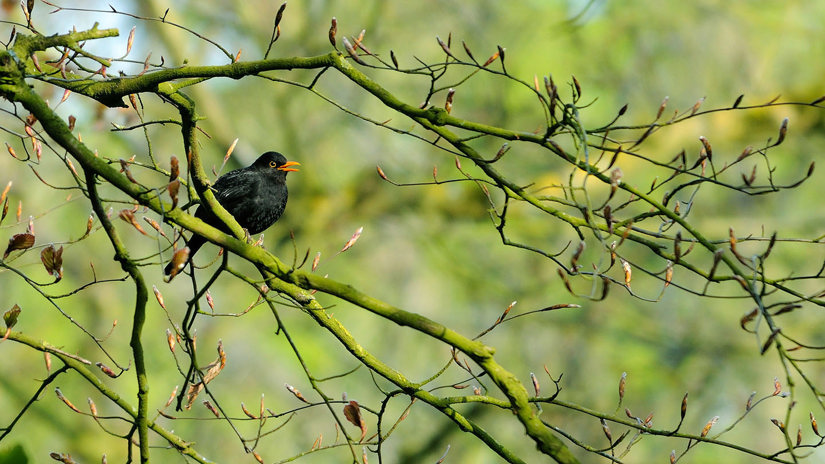
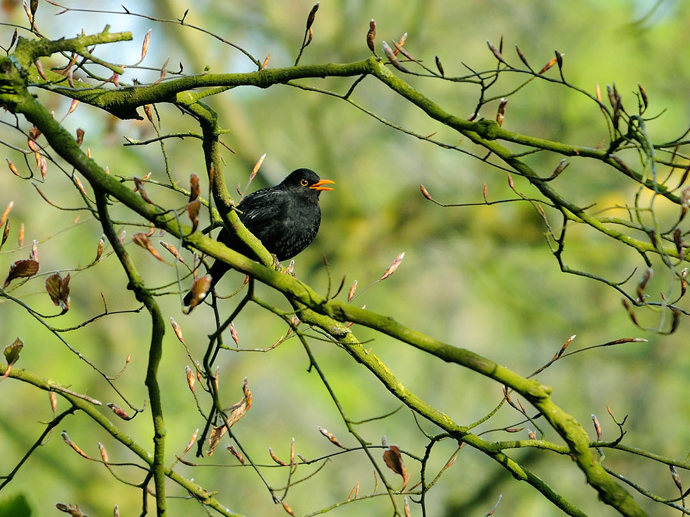
External link
Record the comings and goings of key feathered friends and help scientists track the effects of climate change on wildlife.